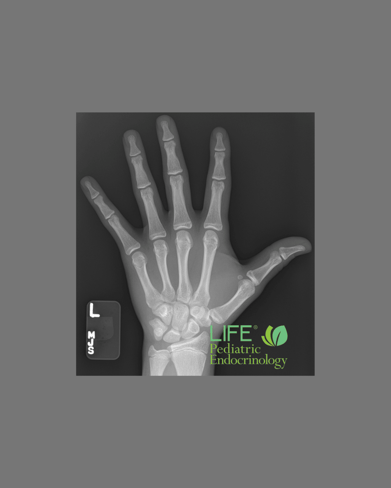Is My Child’s Puberty Normal? Tanner Staging & Bone Age Guide
Understanding How the Body’s Internal Clock Guides Puberty- Puberty Doesn’t Follow a Perfect Schedule
Puberty is one of the most complex — and misunderstood — stages of development. It’s not just about physical changes; it’s a carefully timed symphony involving hormones, growth plates, and the brain’s internal “clock.”
At Life Pediatric Endocrinology, we help families understand what’s normal, what’s early, and what’s delayed, using two key tools: Tanner staging and bone age.
What Is Tanner Staging?
Tanner staging is a five-stage system doctors use to describe the visible changes of puberty:
-
Stage 1: Prepubertal — no secondary sexual characteristics.
-
Stage 2: Puberty begins — breast budding in girls, testicular enlargement in boys.
-
Stage 3: Rapid growth and body hair appear.
-
Stage 4: Continued development, voice changes in boys, menstrual cycles begin in girls.
-
Stage 5: Full physical maturity.
These stages are assessed by observation and clinical examination — they help us gauge where a child is in their pubertal timeline.
But Tanner staging alone doesn’t always tell the full story, because puberty can vary widely between children and across ethnic backgrounds.
Why Bone Age Complements Tanner Staging

If Tanner staging is the “outside view,” bone age is the “inside story.”
Bone age is determined by a quick X-ray of the hand and wrist, showing how far the bones have matured. It’s like reading your child’s internal puberty clock.
When bone age is:
-
Advanced: Puberty may start earlier than expected.
-
Delayed: Puberty may start later, but growth potential often remains intact. Unless the bone age is too delayed.
-
On time: Development is synchronized and healthy.
This simple X-ray helps physicians predict when puberty will occur and how long growth will continue.
How Hormones Control the Pubertal Timeline
Puberty begins when the brain’s hypothalamus “wakes up” the pituitary gland — releasing LH and FSH, which stimulate the ovaries or testes to produce sex hormones.
-
In girls: Estrogen drives breast development, body composition changes, and the first menstrual cycle.
-
In boys: Testosterone triggers muscle growth, voice deepening, and facial hair.
These sex hormones also interact with growth hormone and IGF-1, creating the dramatic growth spurt seen during mid-puberty.
Why Some Kids Enter Puberty Too Early (or Too Late)
-
Early puberty occurs when the hormonal axis activates too soon — before age 8 in girls or 9 in boys. This can lead to emotional stress and reduced adult height if untreated.
-
Delayed puberty happens when activation is postponed — often due to genetic patterns, nutrition, or hormone deficiency.
At LIFE, our team identifies the cause and, when needed, uses safe, temporary medications to either pause or stimulate puberty so that development occurs at the right pace for your child.
The Importance of Synchrony
The most reassuring sign of healthy development is synchrony — when the physical, hormonal, and skeletal systems progress together.
That’s why we often evaluate Tanner stage and bone age together. When these are in sync, puberty tends to unfold smoothly and predictably.
FAQ: Families Often Ask…
1. How do I know if puberty is normal for my child’s age?
Girls typically start puberty between 8–13 years old, and boys between 9–14. Anything earlier or later deserves a check-up.
2. Can puberty start and then stop?
Yes. Sometimes the process “pauses” temporarily, but if it stops for several months, hormone testing is important.
3. Will early puberty make my child shorter as an adult?
It can — because growth plates close sooner. Early intervention can preserve final height. You can read more about the five foods that cause early puberty here.
4. What if my child hasn’t started puberty yet?
That’s often normal, but we can use bone age testing and labs to determine whether it’s a delay.
Schedule a Puberty Timing Consultation
If your child seems early, late, or out of sync with peers, schedule a Puberty Timing Consultation with Life Pediatric Endocrinology.
Our team specializes in guiding families through this sensitive time with evidence-based care and compassion.
Schedule a consultation to learn if your child’s development is right on time.
About Dr. Toni Kim
Dr. Kim is a board-certified pediatric endocrinologist and founder of Life Pediatric Endocrinology, known for redefining puberty and growth care with a balance of science and empathy.
Learn how bone age predicts growth potential:
What Is Bone Age? How X-Rays Reveal Your Child’s Growth Timeline
Disclaimer
This information is educational and not a substitute for individualized medical advice.
Share this
You May Also Like
These Related Stories

When to Worry About Your Child’s Growth: Early Puberty & Late Bloomers

Child Height Calculator & Guide | How Tall Will My Child Be?


